EVM Overview
AM263X-CC
- EVM (Part Number: TMDSCNCD263)
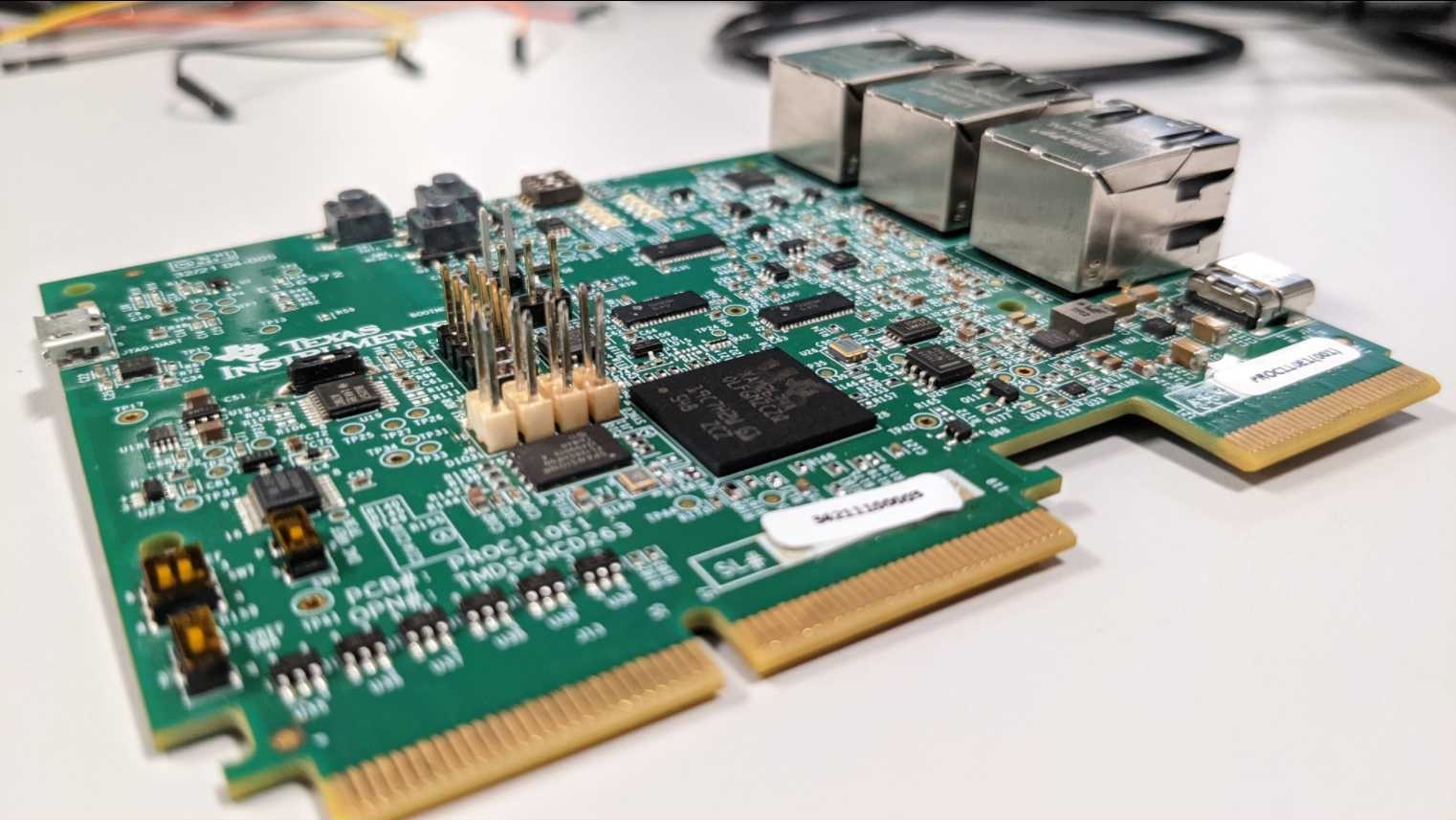
AM263X-CC
- Major Components and Features
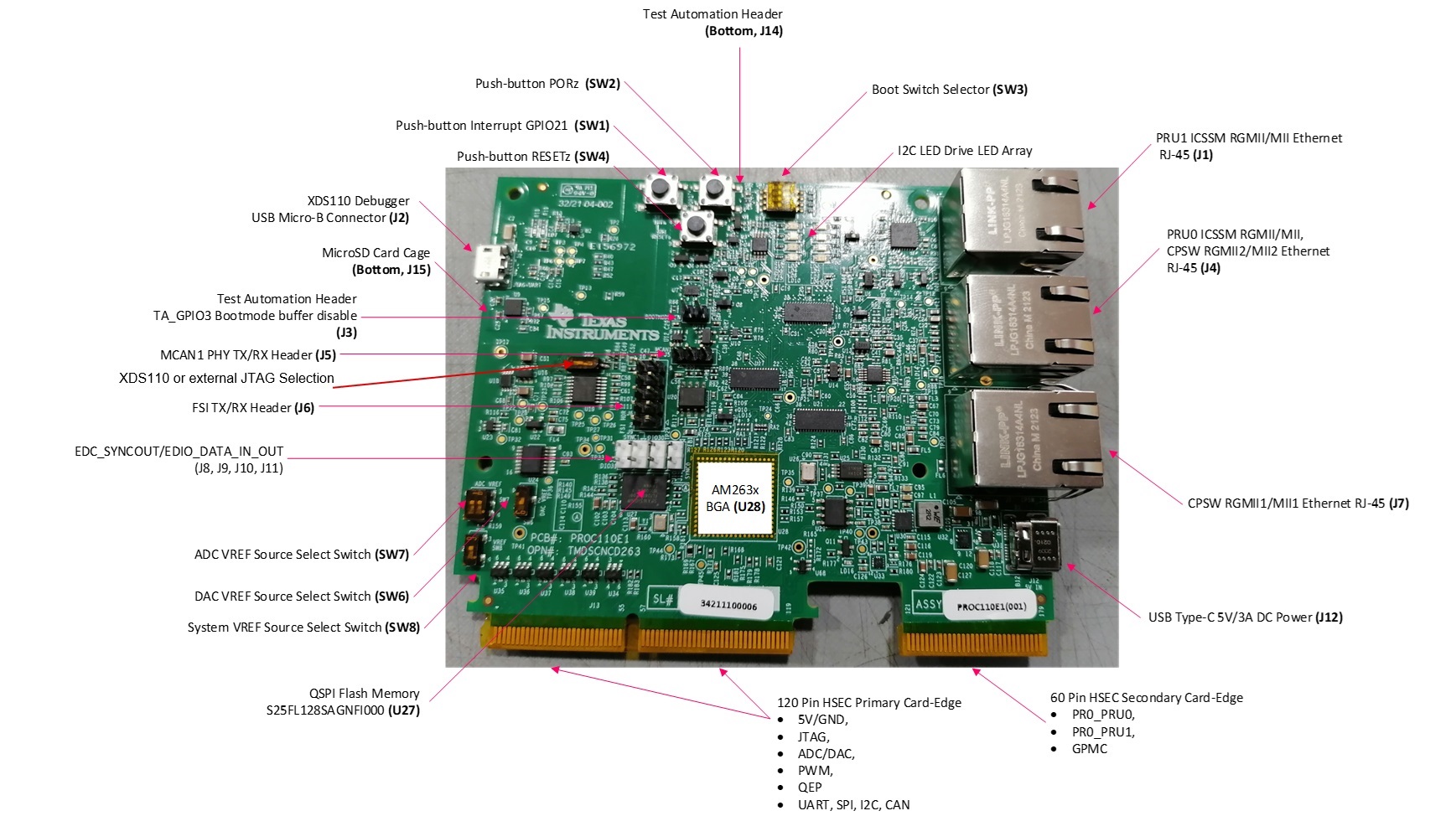
AM263X-CC Components and Features
- What is not included with EVM
- USB Type-C AC/DC Supply, 5V/3A. Power options available from typical distributors
- TMDSHSECDOCK - TI Control Card debug breakout
- Note
- Refer to EVM page for more details, https://www.ti.com/tool/TMDSCNCD263
AM263X-LP
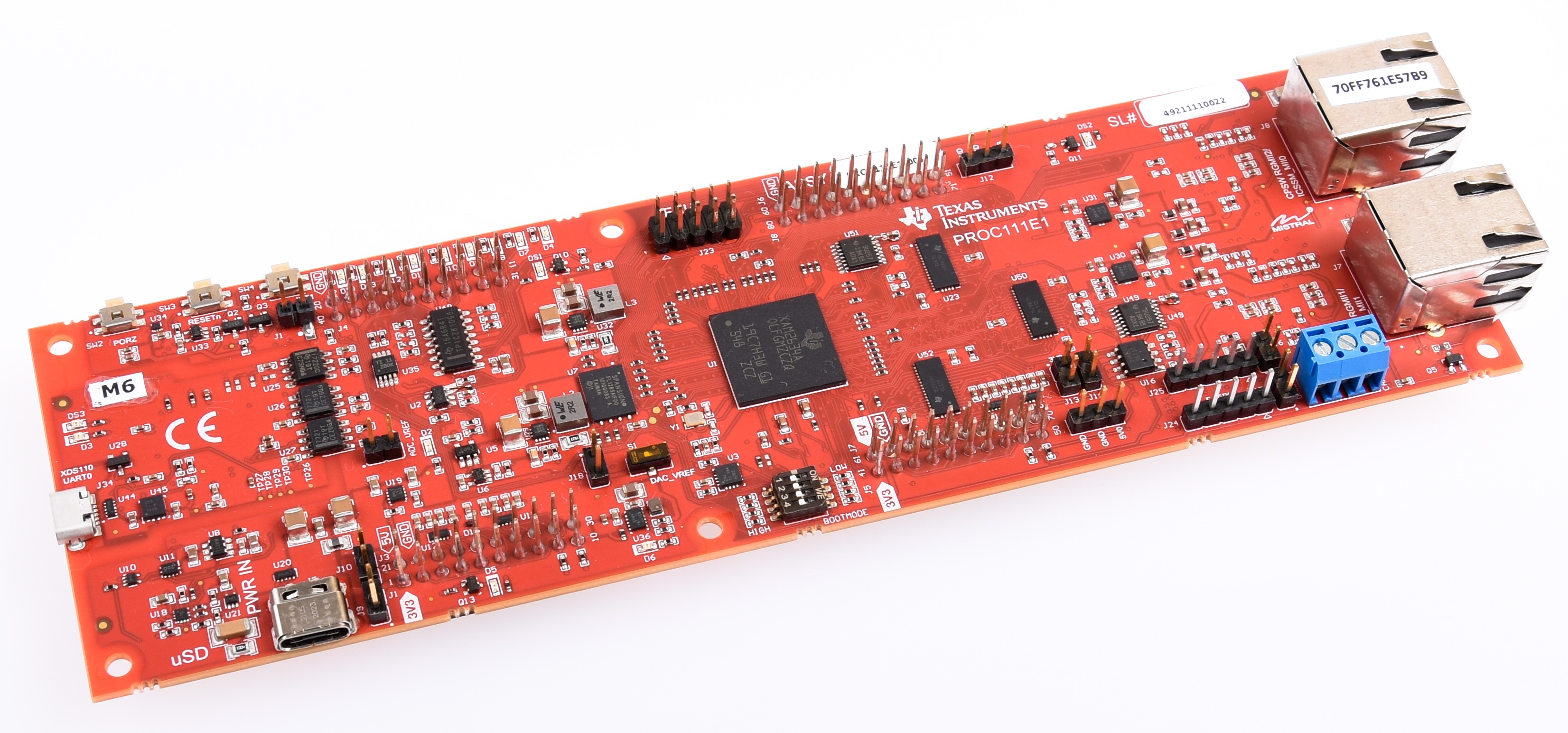
AM263X-LP
- Major Components and Features
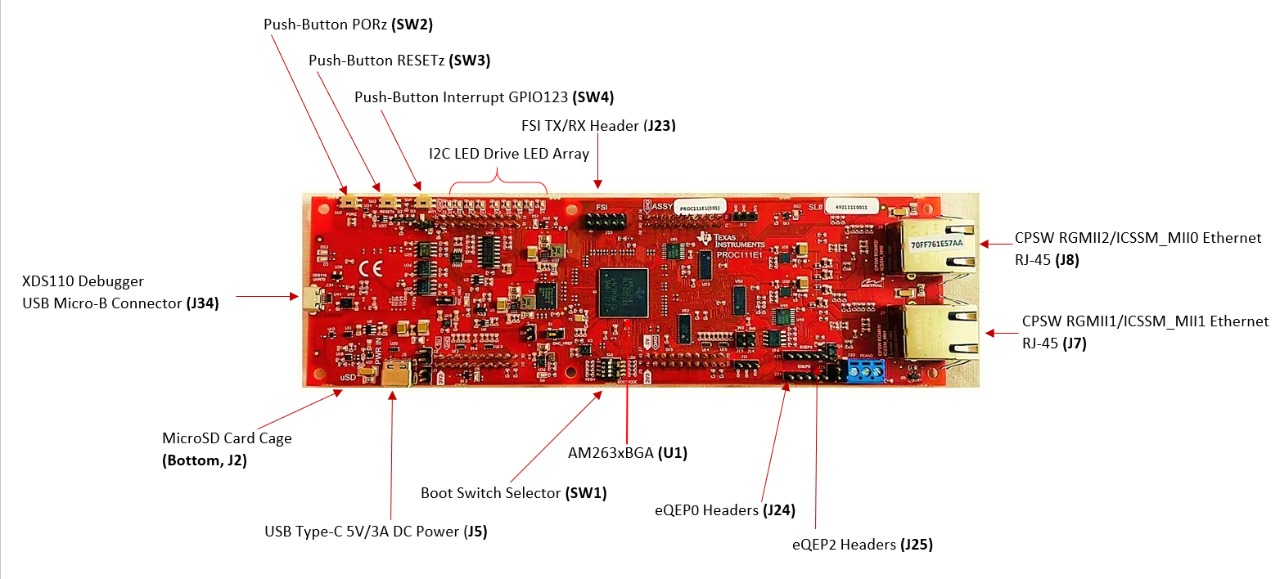
AM263X-LP Components and Features
- Note
- Refer to EVM page for more details, https://www.ti.com/tool/LP-AM263
Cable Connections
Important cable connections, ports and switches.
AM263X-CC
- System Power On/Off
- 5V power through Type-C 5V/3A
- HSEC 5V power is available only if Type-C is unavailable
- No mechanical on/off switch on this EVM
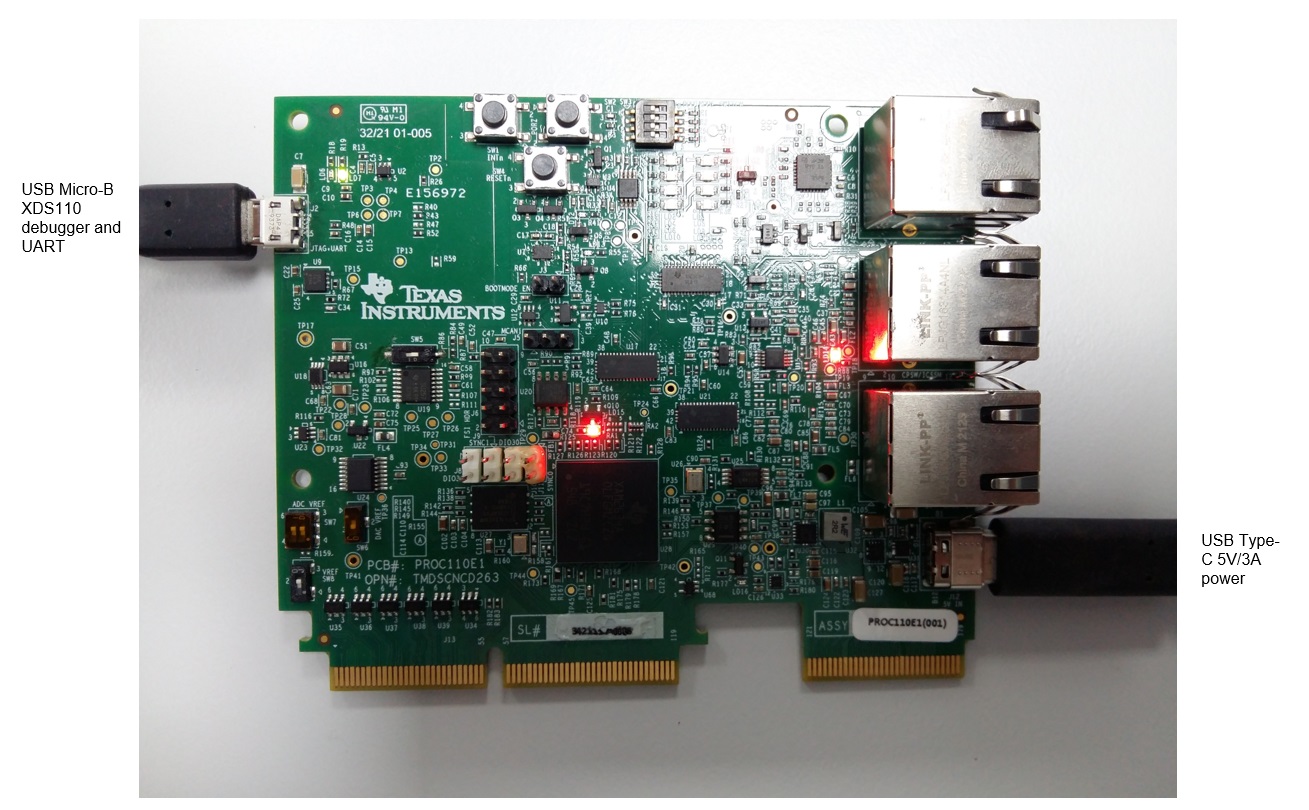
AM263X-CC Power
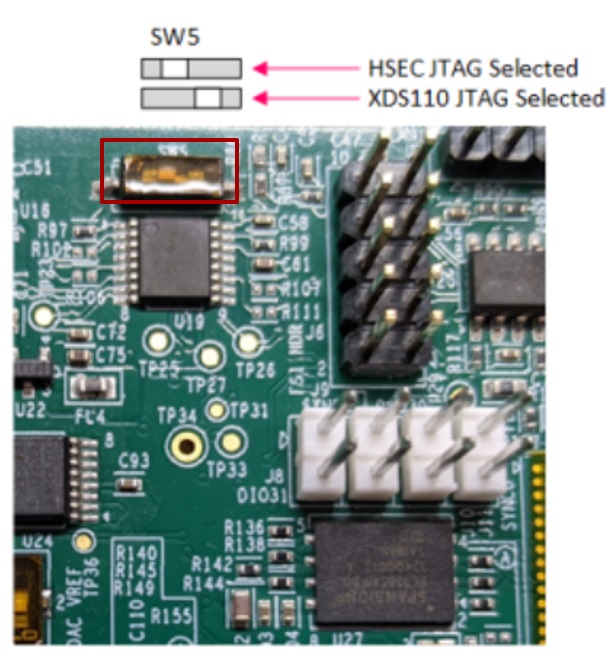
AM263X-CC JTAG selection

AM263X-CC bootmode
AM263X-LP
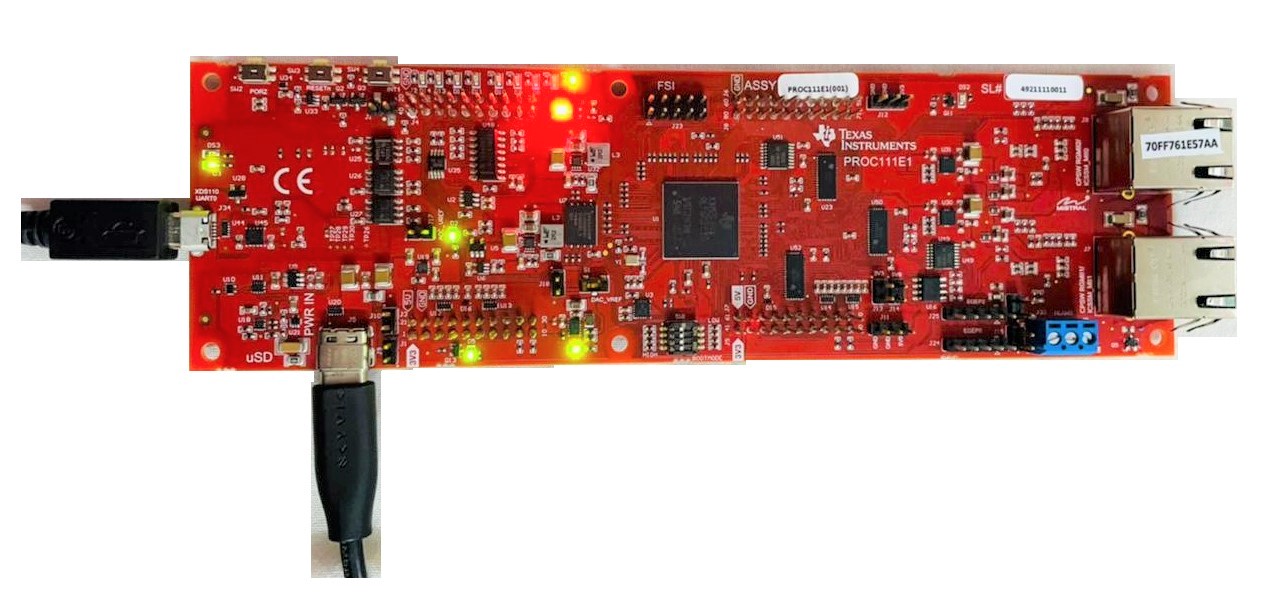
AM263X-LP Power

AM263X-LP bootmode
Setup UART Terminal
AM263X-CC
- Many examples use a standard UART terminal to log the output from the examples. You can use any UART terminal program for the same. Below steps show how to setup the UART terminal from CCS.
- First identify the UART port as enumerated on the host machine.
- Make sure that the EVM and UART cable connected as shown in Cable Connections
- In windows, you can use the "Device Manager" to see the detected UART ports
- Search "Device Manager" in Windows Search Box in the Windows taskbar.
- If dont see any USB serial ports listed in "Device Manager" under "Ports (COM & LPT)", then make sure you have installed the UART to USB driver from FTDI, https://www.ftdichip.com/FTDrivers.htm.
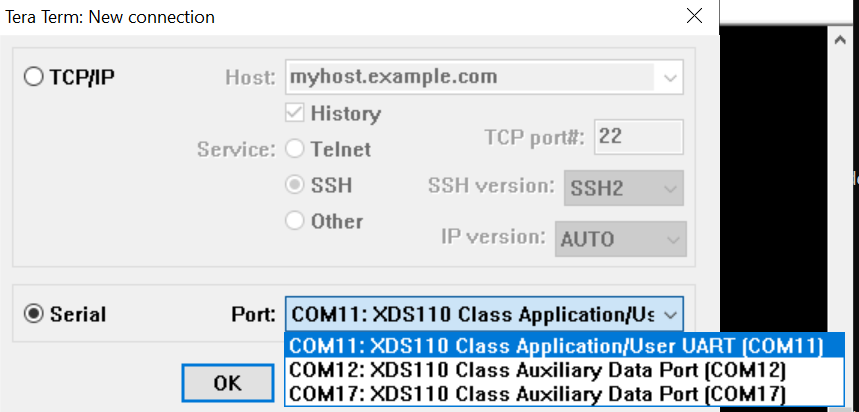
Identify UART Port in Windows Device Manager
- In CCS, goto "View > Terminal"
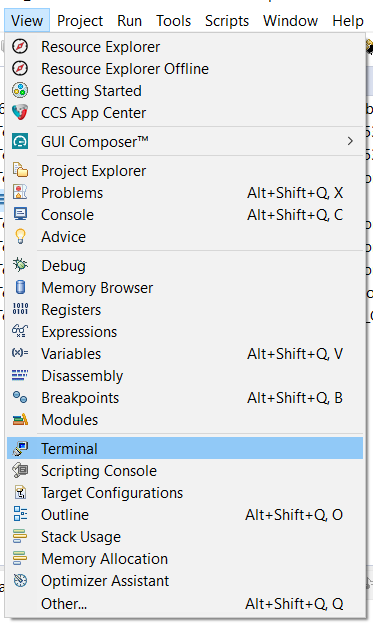
UART Terminal Menu

Open New UART Terminal
- Select the UART port, keep other options to default, i.e 115200 baud rate - 8 data bits - No parity - 1 stop bit,
- We use this serial port, as seen in the device manager, for below in the SDK
- Flashing application via UART
- Booting application via UART
- Console output for examples
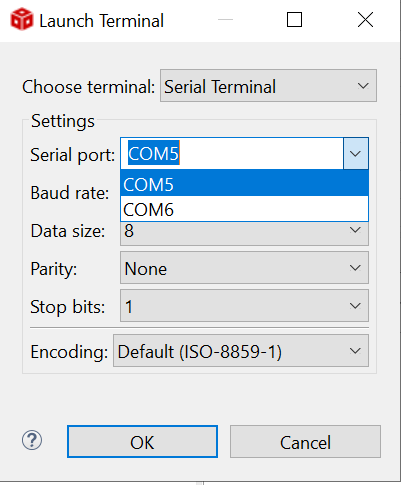
Connect to UART port
- In this screenshot this happens to be COM5/COM11 however on your machine this could be different. One tip to make sure there is no mistake in identifying the UART port is to disconnect all other UART to USB devices other than this EVM before checking in device manager.
AM263X-LP
- Many examples use a standard UART terminal to log the output from the examples. You can use any UART terminal program for the same. Below steps show how to setup the UART terminal from CCS.
- First identify the UART port as enumerated on the host machine.
- Make sure that the EVM and UART cable connected as shown in Cable Connections
- In windows, you can use the "Device Manager" to see the detected UART ports
- Search "Device Manager" in Windows Search Box in the Windows taskbar.
- If dont see any USB serial ports listed in "Device Manager" under "Ports (COM & LPT)", then make sure you have installed the UART to USB driver from FTDI, https://www.ftdichip.com/FTDrivers.htm.

Identify UART Port in Windows Device Manager
- In CCS, goto "View > Terminal"

UART Terminal Menu

Open New UART Terminal
- Select the UART port, keep other options to default, i.e 115200 baud rate - 8 data bits - No parity - 1 stop bit,
- We use this serial port, as seen in the device manager, for below in the SDK
- Flashing application via UART
- Booting application via UART
- Console output for examples

Connect to UART port
- In this screenshot this happens to be COM5/COM11 however on your machine this could be different. One tip to make sure there is no mistake in identifying the UART port is to disconnect all other UART to USB devices other than this EVM before checking in device manager.
Additional Details
- Note
- This section has more details on AM263X-CC and AM263X-LP. This is mainly for reference and can be skiped unless referred to by other pages in this user guide.
-
Make sure boot mode switch is setup to DEVBOOT mode to use with CCS Scripting. please refer SOC Initialization Using CCS Scripting
BOOT MODE
QSPI BOOT MODE
AM263X-CC
This mode is used to boot flashed applications via EVM flash like QSPI flash
BOOTMODE [ 1 : 4 ] (SW3) = 0010
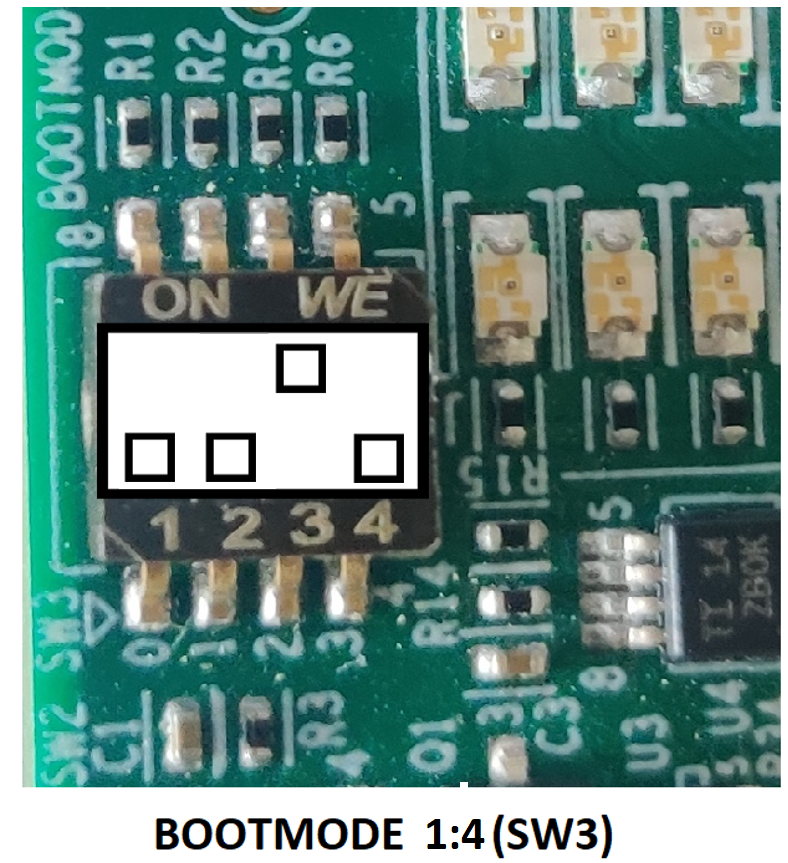
QSPI BOOT MODE
AM263X-LP
This mode is used to boot flashed applications via EVM flash like QSPI flash
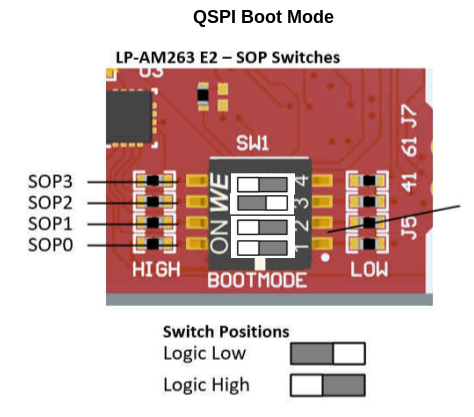
QSPI BOOT MODE
UART BOOT MODE
AM263X-CC
This mode is used to flash files to the EVM flash via UART. It can also be used to boot applications via UART.
\code
BOOTMODE [ 1 : 4 ] (SW3) = 1000
\endcode
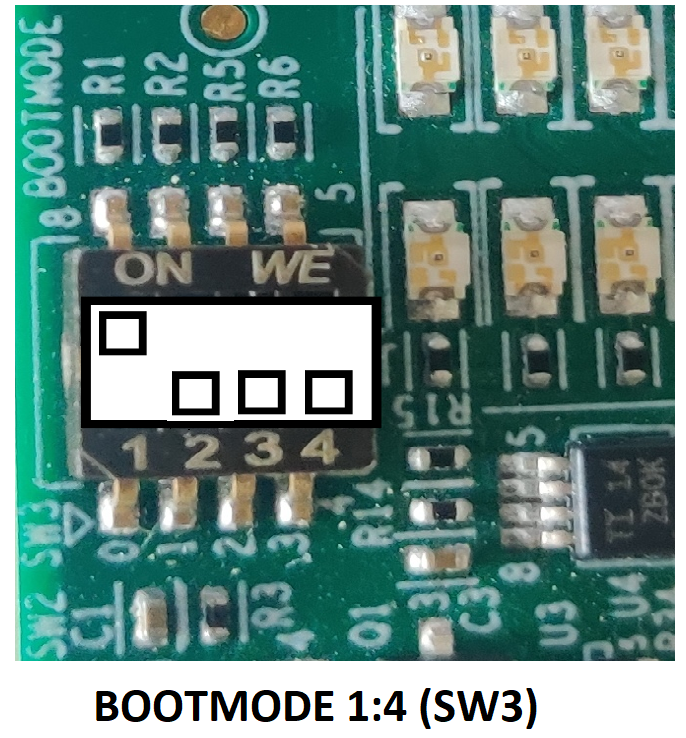
UART BOOT MODE
AM263X-LP
This mode is used to flash files to the EVM flash via UART. It can also be used to boot applications via UART.
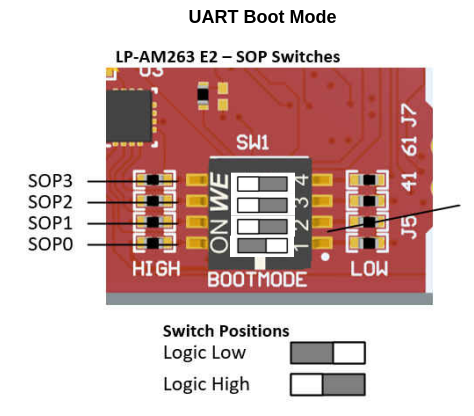
UART BOOT MODE
DEVBOOT MODE
AM263X-CC
This mode is used in CCS.
BOOTMODE [ 1 : 4 ] (SW3) = 1101
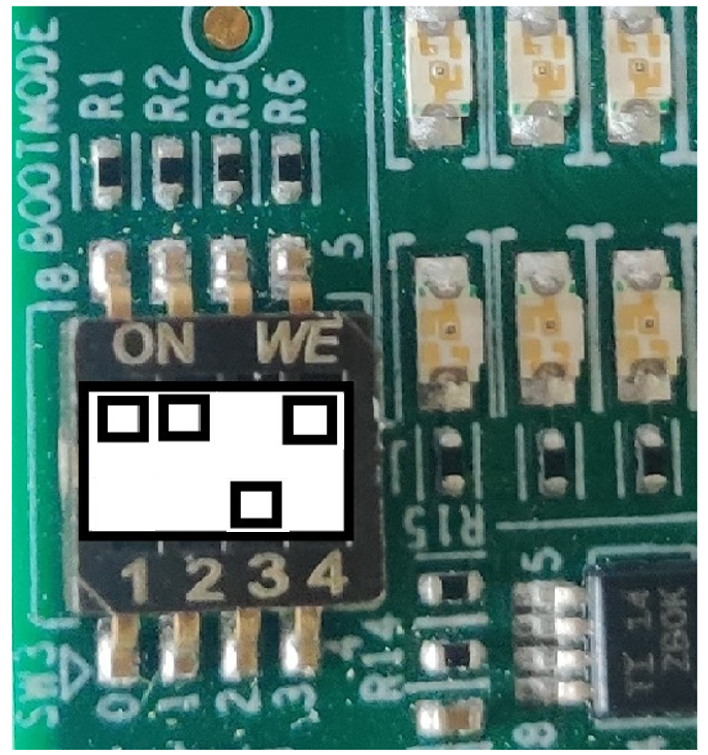
DEVBOOT MODE
AM263X-LP
This mode is used in CCS.
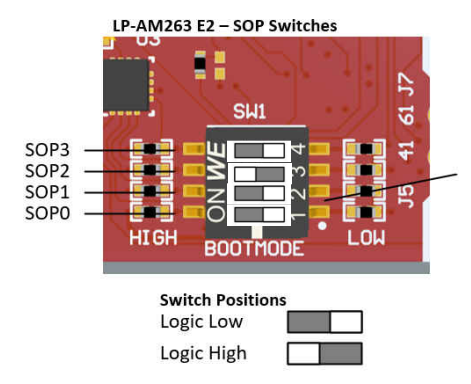
DEVBOOT MODE



















